Licensing Contributor Renat Renee-Ell is a conceptual and fine art photographer based in Saint Petersburg, Russia. Working with complex narratives in her photography, she embraces color and texture while challenging our perception of reality. Browse her Licensing collection here.
I love to shoot conceptual series and experiment with process, design, and video. In this article, I’ll share how I shot a series of photos and my first video, “breathe to heave.” I’ll discuss different aspects of the shoot and elaborate on the idea, the prep, and the execution of the concept, sharing my tips not only for photographers, but for stylists, art directors, and producers.
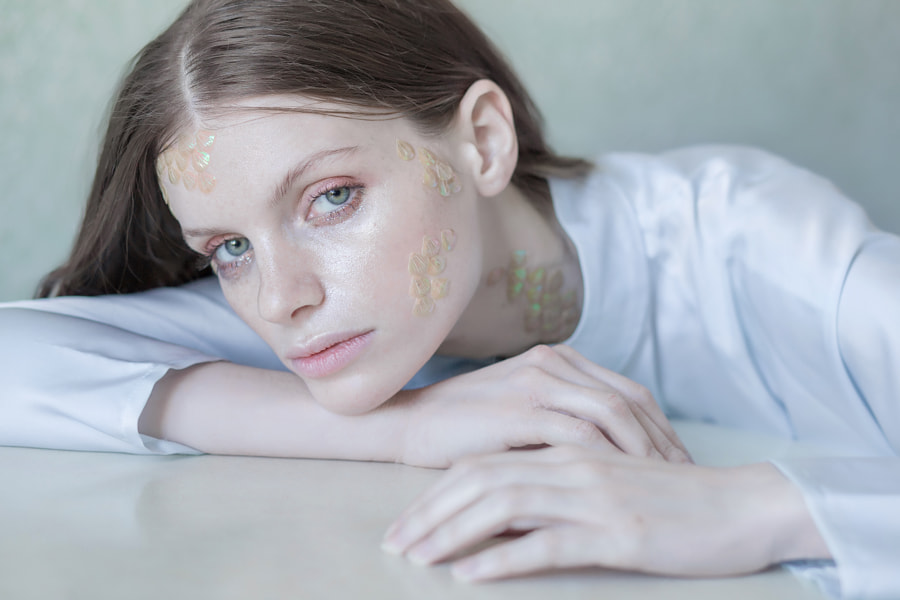
The “breathe to heave” series was inspired by feeling lost. I hadn’t shot anything for several months and I didn’t have a job. It was winter, when all the days merge into one, inexpressive gray spot and nothing really happens. I desperately wanted to do something or try something new, despite my limited resources. This became my first shoot of last year.
The project reveals the state of detachment and alienation by means of metaphor. The metamorphosis into a fish is the materialization of repressed experiences, with a chance to influence anything, the meaninglessness of existence. I wanted to express subconscious emotion and mix reality with a bizarre combination of objects to reflect a dreamlike state.
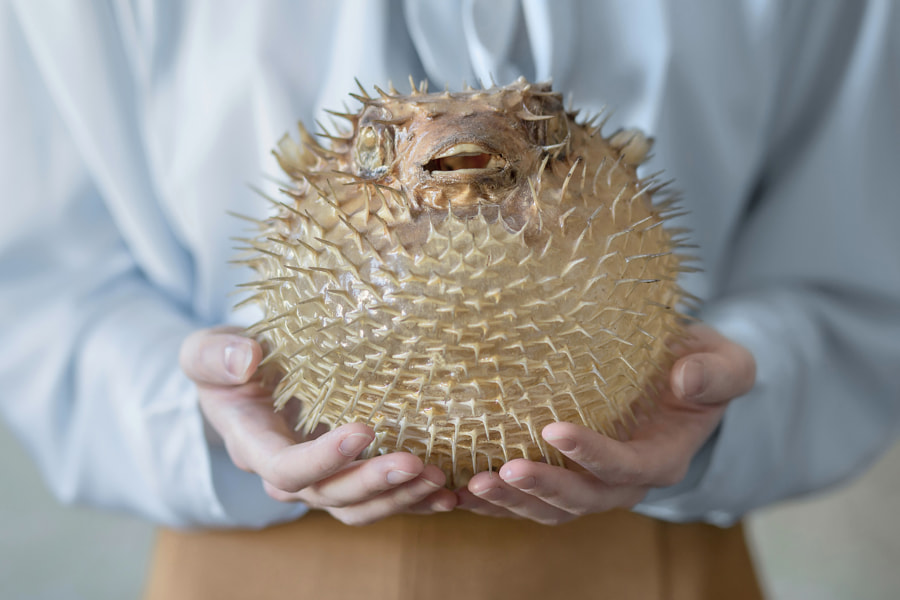
Vika (the model) turning into a fish carries in itself a reference to “The Metamorphosis,” a novella written in 1915 by Franz Kafka. Franz Kafka is one of my favorite authors, whose writing provides connection and resonates deeply with me. It was easy for me to draw inspiration from his works. To some extent, my series can be considered a tribute to “The Metamorphosis.”
There are a few key areas to focus on when you develop a conceptual shoot:
- Coming up with an idea
- Sourcing your location, team, and props
- Finalizing the shoot details
- Shooting

Coming up with a concept
Ideas come in different ways. Sometimes there is an immediately-clear concept—I see an interesting location or a charismatic model or unique props, and everything immediately forms into a picture. Sometimes it is something figurative or elusive, like when listening to music and my imagination draws frames.
To catch the mood and form an idea, sketch a draft list of images or frames while the impression is fresh, make up a primary moodboard, listen to a track and take a walk—in the park, a shop, an art gallery, etc. Walking on foot helps the process flow, and ideas may arise in unexpected places.
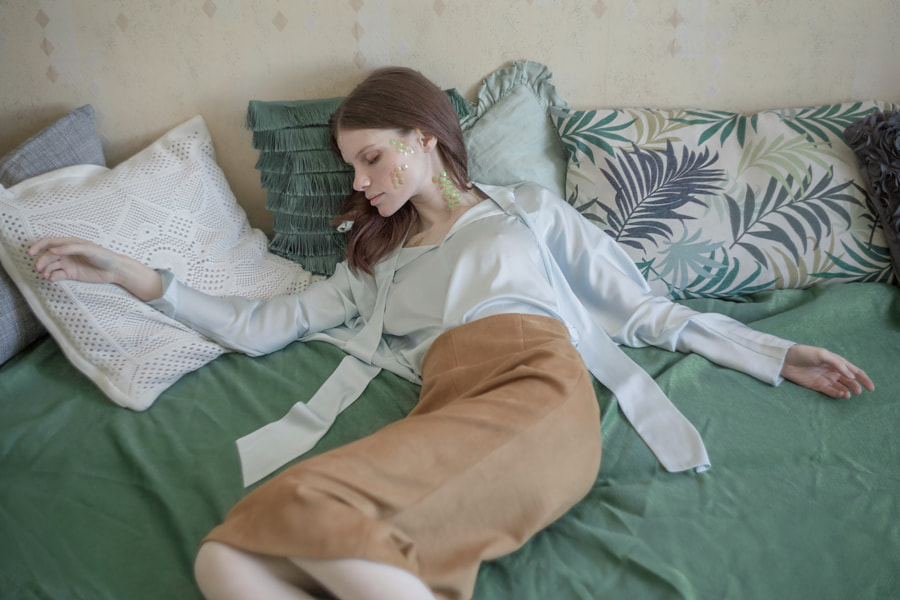
Finding the location
So your idea is initially framed and now it is important to understand where you are going to shoot. Location is the cornerstone of a successful shoot. Until that is confirmed, you have nothing solid.
What is important to consider right away is accessibility (is it paid or free, is it difficult to get, etc.), shooting time (timing restrictions, for example, a school playground, where it is free after dinner?), and conditions (what kind of lighting is available, is there natural light, when is the best lighting?). I decided to shoot this series at home. The advantages are obvious: it’s free, time is unlimited, everything is at hand, plus it had everything I need.
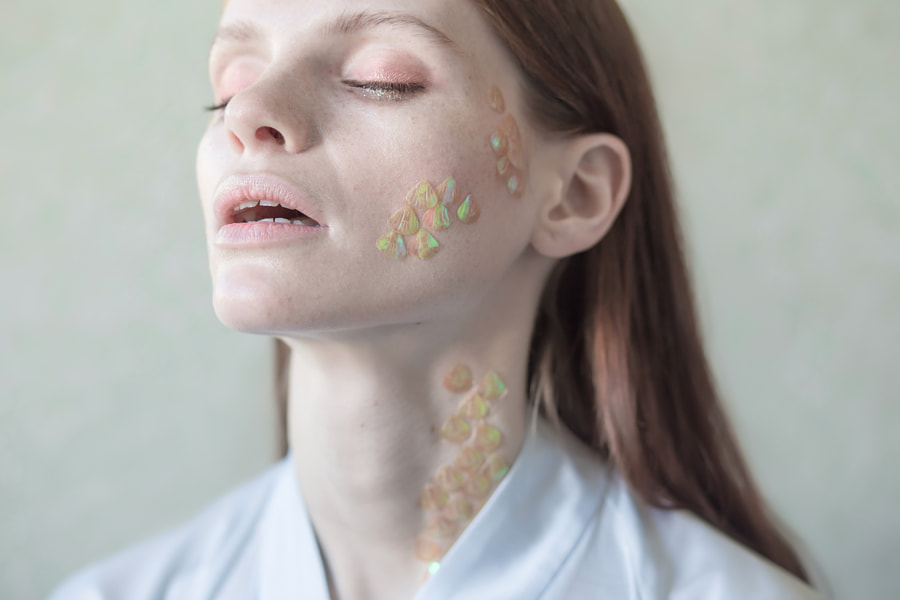
Choosing a team
If you are at the very beginning of your creative journey, I recommend finding like-minded people (fellow photographers, makeup artists, designers). You will grow together, build mutual understanding, and work on your portfolios. I have a couple of makeup artists with whom I’ve been working for five years already.
As for models, this is quite an easy task now, in the age of social media. Moreover, supply exceeds demand. In most cases, I shoot the same people—friends, not professional models. For me, they are like favorite brushes, tried-and-true “tools.” Knowing how a person behaves in the frame, you can achieve greater expressiveness.
If I call on a new person to shoot, I ask them to send me actual snaps. Sometimes we meet prior to the shoot. A couple of times, I did a test shoot, which is also a good method. In this series, I was shooting a model with whom I worked for the first time, but we already knew each other previously, just lived in different cities. Another crucial piece to remember is model releases. Specify the requirement of signing it in advance. You are investing in your idea and must be sure that later you will have all the rights to your work.
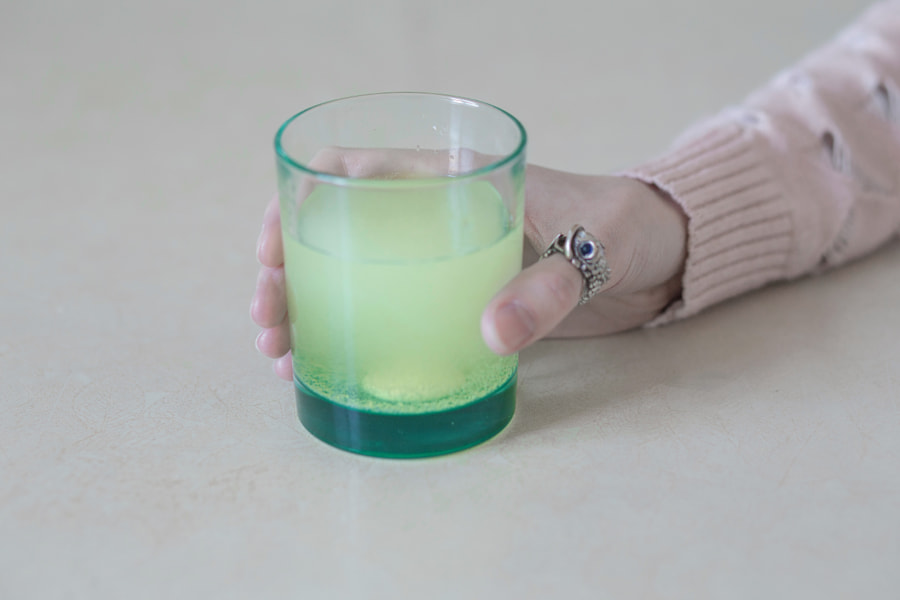
Developing concept details
You have an idea. There is a location, model, and team. Now, your task is to tie everything together. Move away from the simple. Decide on the colors. What will be the general tone and what will be the accents? In my series, these are cool, delicate shades of blue and green, combined with red, light yellow, and pink.
Having decided on the overall picture, the colors of the location, and image of the model, think over the details: accessories, makeup, props. These are like spices for a dish; they reveal the image and set the mood. In my series, this is a fish brooch, scales in the model’s makeup, and parallels in the fish on the cutting board and the model on the sofa.
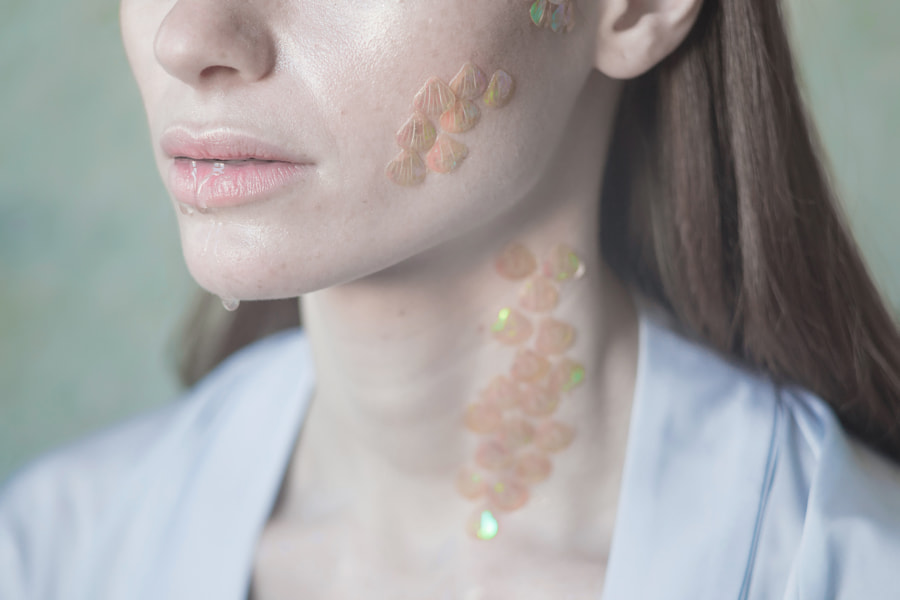
Building a storyboard
Since I was planning to shoot a video, writing a storyboard was an important task. For this, I previously tested the location through the lens. In my case, it turned out to shoot only medium and large plans due to limited footage. I advise you to do this for photo shoots, no matter whether you plan to shoot a story with a linear plot or figurative campaign.
To do this, have a general plan of action, e.g.: a light, half-empty room, a mirror hangs on the wall, a man stands, his back to us. Half-length frame, a person looks in the mirror, you can see the reflection of his face, the expression is calm, submerged. Close-up (accent, attraction of attention): for example, his hand kneads clothes (non-obvious, nervous tension, mood changes).
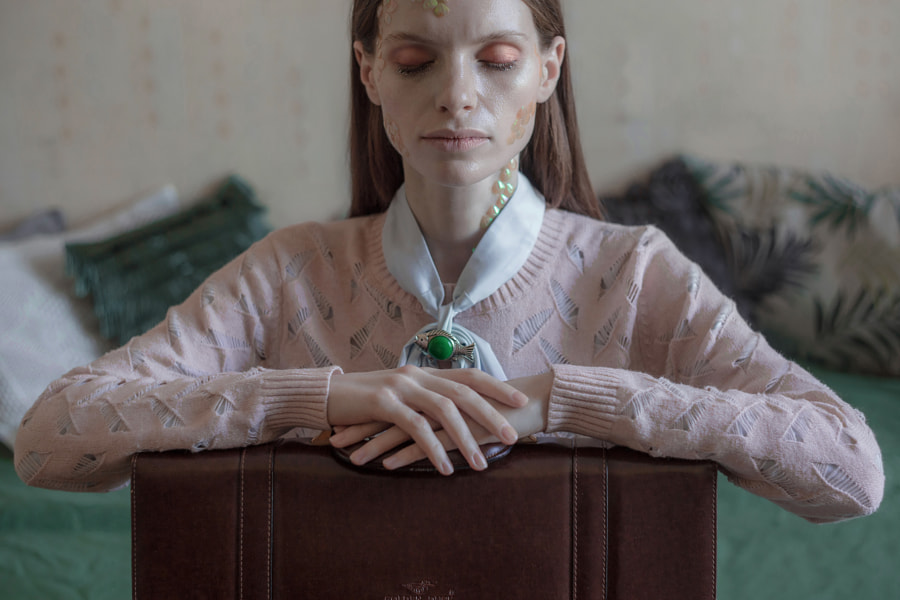
Shooting your work
Write a plan (things to prepare, storyboard) and keep it with you. During the shooting, there are a lot of distractions and you can forget something important from the excess of information, get lost, lose time. People write a list of products they need to buy at the store for the same reason.
It’s also helpful if there is an assistant or assistants on the shoot, someone who will keep track of things, time, folds clothes, makeup, etc. A view from the outside can also help a lot, to ensure small-but-obvious things don’t get lost in the shuffle.
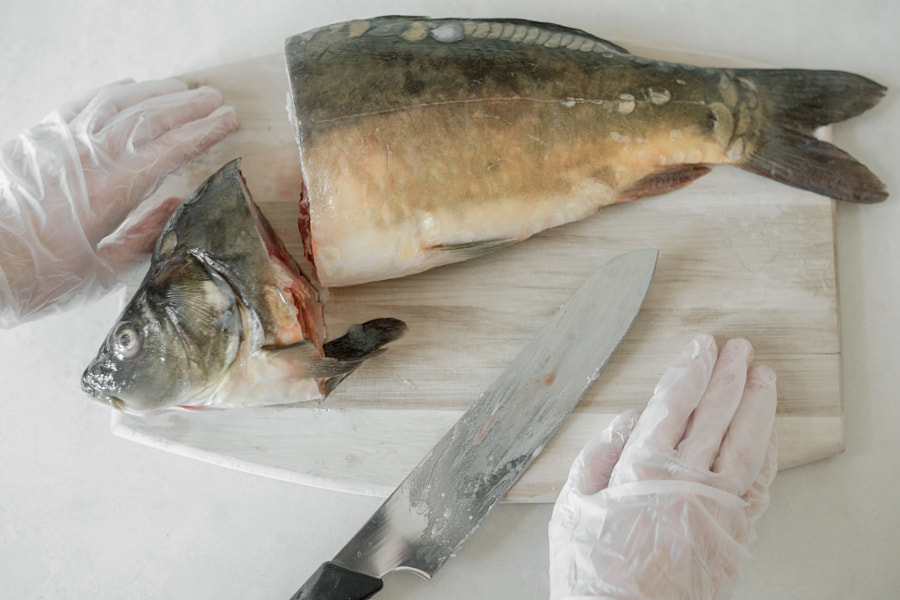
All in all…
My shoot was successful. I was very worried that I would not have time, the result wouldn’t be worth the effort, etc. Until I dropped the material from the flash card, I wasn’t sure about anything. It is difficult for me to evaluate my creativity, I cannot be objective. However, it was a great experience, an interesting challenge, and provided me with plenty of new knowledge.
Try new things. Work with the team. Use rental equipment. Watch educational videos. Do not be afraid to experiment!
Follow Renat Renee-Ell
500px: 500px.com/renat-renee-ell
Instagram: @renat_renee
